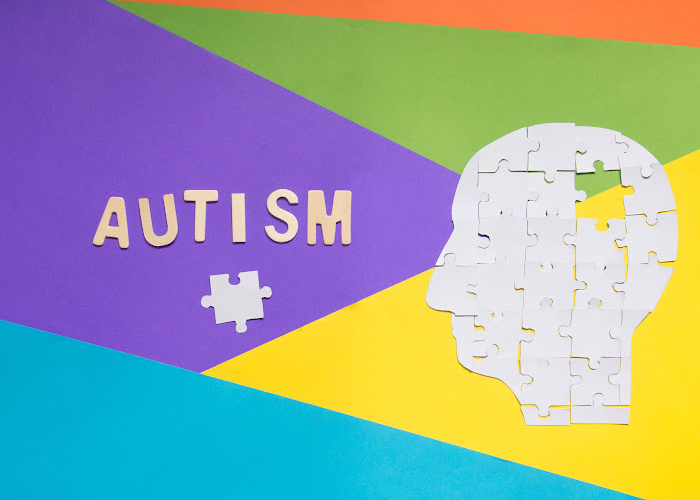It's crucial to know that students with autism and ADHD need special study strategies. Autism…

Do Autistic People Look Different? – Exploring Autism Traits
Autism is a neurological condition that affects individuals in various ways. While some people may assume that those on the autism spectrum have distinct physical features or facial characteristics, the reality is more complex than that.
When considering the appearance of autistic individuals, it’s important to understand that autism manifests differently in each person. Some individuals may exhibit physical traits, such as a certain gait or mannerisms, that could potentially be associated with autism. However, these characteristics are not definitive indicators of autism, and one individual’s appearance may not resemble another’s.
It’s essential to recognize that autism is not defined by physical appearance alone. Autism is a spectrum disorder that affects individuals in different ways and to varying degrees. While some people with autism may exhibit certain physical or visual differences, it is crucial to remember that these differences do not define the person and should not be the basis for assumptions or judgments.
In the following sections, we will explore the common characteristics, facial features, and visual differences often associated with autism. We will also discuss the limitations of identifying autism solely through appearance and emphasize the importance of comprehensive evaluations conducted by qualified professionals.
Join us as we delve deeper into the fascinating and complex world of autism and explore the question of whether autistic people look different.
Common Characteristics of Autism
Autism is a neurodevelopmental disorder that affects individuals in a variety of ways. While there is no definitive set of characteristics that apply to everyone on the autism spectrum, there are some common physical traits and behavioural differences that can be observed.
These traits may manifest in an individual’s appearance, movement, or sensory processing. It’s important to note that not all individuals with autism exhibit all of these characteristics, and the severity of these traits can vary widely from person to person.
Some of the common physical traits of autistic individuals may include:
| Physical Traits | Significance |
|---|---|
| Unusual facial expressions or lack of facial expression | May demonstrate difficulties with social communication and expression |
| Repetitive movements or behaviours | May engage in repetitive actions such as hand flapping, rocking or spinning |
| Sensory sensitivities | May be over or under-sensitive to sounds, textures, tastes, smells, lights or touch |
Alongside these physical traits, many individuals with autism also exhibit differences in their behaviours and social interactions. Some common signs of autism in appearance may include:
- Difficulty making eye contact
- Lack of interest in social interactions or difficulty initiating or maintaining conversations
- Difficulty interpreting social cues or sarcasm
- Preference for routine and order
Understanding these characteristics and behaviours is important for recognising and supporting individuals with autism. However, it’s important to remember that these traits alone cannot diagnose or define autism. Comprehensive assessments conducted by qualified professionals are necessary for an accurate diagnosis.
Facial Features and Autism
When considering the signs of autism in appearance, facial features are often a topic of discussion. While individuals with autism may exhibit certain facial characteristics, these features are not exclusive to the autism spectrum.
Research has suggested that some individuals with autism may have atypical facial features such as a wider than average distance between their eyes or a flatter midface. However, it is important to recognize that not all individuals with autism exhibit these traits and that they can be present in individuals without autism as well.
It is important to approach the topic of facial features with sensitivity and care, as it can be easy to make assumptions based on outward appearances alone. The appearance of an individual with autism is just one aspect of the condition and cannot be used as the sole indicator of a diagnosis.
Facial features should not be relied upon for a diagnosis of autism. A comprehensive evaluation conducted by a qualified professional is necessary for an accurate diagnosis. It is important to understand that autism is a complex neurological condition with a wide range of characteristics and traits.
Visual Differences in Autism
Individuals with autism may exhibit various visual differences, including atypical eye contact, gaze aversion, and other unique visual behaviours. These differences may manifest in a variety of ways and can be indicative of autism.
It is important to approach these observations with sensitivity and understanding, as they may be part of an individual’s unique way of communicating or interacting with the world. It is crucial to recognise that these visual differences alone cannot diagnose or define autism.
Therefore, it is essential to seek comprehensive diagnostic evaluations conducted by qualified professionals to form an accurate diagnosis. These evaluations may include assessments of an individual’s social communication, speech and language, and behavioural patterns, among other factors.
Identifying Autism through Appearance
It is natural to wonder whether you can identify autism through appearance. After all, some autistic individuals may have certain physical features or behaviours that appear different from those who are not on the spectrum. However, it is essential to recognise that physical characteristics alone cannot diagnose or define autism.
While certain physical traits may be more common in individuals with autism, they can also be present in individuals who do not have autism. It is crucial to avoid making assumptions based on outward appearances and instead focus on comprehensive diagnostic evaluations conducted by qualified professionals.
Identification of autism through appearance can be challenging, as the spectrum is broad and the manifestation of symptoms can vary widely. Therefore, it is essential to approach this topic with sensitivity and understanding. While visual differences in autism may exist, they are not definitive indicators of autism.
A diagnosis of autism should be made through a combination of careful observation and formal evaluations by specialists in the field. It is important to note that identifying autism through appearance is not reliable and can lead to incorrect assumptions and negative stereotypes.
The Complexity of Autism
Autism is a complex neurological condition that manifests in a variety of ways. While there are certain common characteristics and physical traits often observed in individuals with autism, it is important to understand that autism cannot be solely defined by appearance.
Autistic individuals may exhibit a range of physical differences, such as atypical facial features or visual behaviors, but these alone cannot diagnose or define autism. It is crucial to approach the topic of autism with sensitivity and avoid making assumptions based on outward appearances.
Autism is a spectrum disorder, meaning that it affects individuals differently and to varying degrees. Some may exhibit more pronounced physical traits, while others may not have any discernible differences in appearance at all.
Furthermore, it is important to remember that physical characteristics are only one aspect of autism. The cognitive, behavioral, and social components of autism are equally important and may not always be visible from outward appearances.
It is essential to approach the topic of autism with openness and understanding. Comprehensive assessments conducted by qualified professionals are necessary for an accurate diagnosis, and a more inclusive society can be created through greater acceptance and support of individuals with autism.
Conclusion
In conclusion, it is important to understand that while some autistic individuals may exhibit physical traits or facial characteristics that differ from the norm, solely relying on appearance to identify autism is not accurate or appropriate.
Autism is a complex spectrum disorder, and a comprehensive evaluation by qualified professionals is necessary for an accurate diagnosis. It is crucial to approach this topic with sensitivity and avoid making assumptions based on outward appearances alone.
By understanding and accepting the wide range of traits and characteristics exhibited by individuals on the autism spectrum, we can create a more inclusive society for all. Remember to always approach people with autism with empathy and understanding, and seek out resources and support when needed.
Frequently Asked Questions
Do autistic people look different?
No, autism is a neurological condition and cannot be solely defined by physical appearance. While autistic individuals may exhibit certain traits or differences in appearance, it is crucial to approach this topic with sensitivity and avoid making assumptions based on outward appearances alone.
What are the common characteristics of autism?
Common characteristics of autism include atypical social communication and interactions, restricted interests and repetitive behaviours, sensory sensitivities, and difficulties with change and transitions. These characteristics may manifest in the behaviour and appearance of individuals with autism.
Are there specific facial features associated with autism?
Research has explored potential visual differences in the facial features of individuals with autism, but it is important to recognize that physical features alone cannot diagnose or define autism. Autism is a complex condition that cannot be determined solely through someone’s appearance.
Are there visual differences in individuals with autism?
Yes, there may be visual differences often observed in individuals with autism, such as atypical eye contact, gaze aversion, or other visual behaviours. However, it is essential to approach these observations with sensitivity and understanding, as they do not provide a conclusive diagnosis of autism.
Can autism be identified through appearance?
It is not possible to identify autism solely through someone’s appearance. Diagnosis of autism requires comprehensive evaluations conducted by qualified professionals, taking into account various aspects of an individual’s functioning and behaviour.
How complex is autism?
Autism is a complex spectrum disorder, and individuals on the autism spectrum can exhibit a wide range of traits and characteristics. It is important to understand that autism is a neurological condition and cannot be reduced to physical appearance alone.



This Post Has 0 Comments